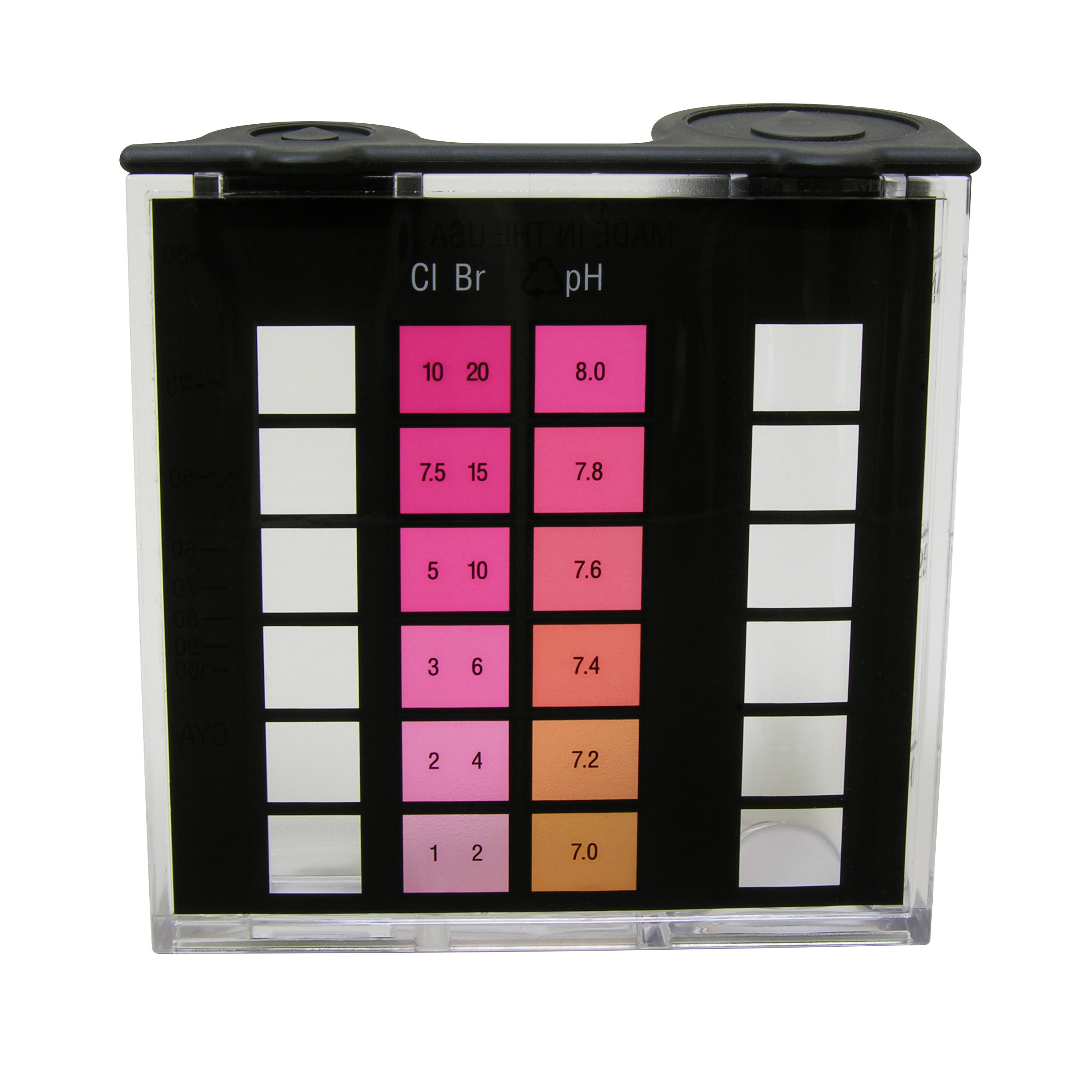Bleaching When Doing a DPD Test

Here at Taylor, part of what I do is answer the technical calls and e-mails from homeowners, service techs, health officials, and superheroes (ok…I lied about the superheroes). That’s A LOT of calls and e-mails.
The majority of calls are about the same topics, and I often get asked the same questions: “Why am I getting a zero or very low chlorine reading when I know there’s plenty of chlorine in the water?” “What is the proper way to hold a dropper bottle when dispensing drops?” “Where did that weird color stain in my pool come from?”
One of the most common questions I get is about the DPD test for chlorine — both the color-matching method and the FAS-DPD drop-test method. The call goes something like this:
- ME: Hi, this is Wayne. How can I help you?
- CALLER: Your test doesn’t work.
- ME: Okay. Which test?
- CALLER: That pink test for my chlorine level.
- ME: Okay. Why are you saying it doesn’t work?
- CALLER: I added the 5 drops of reagent #1 and the 5 drops of reagent #2, but the sample is still colorless. I know there’s chlorine in there because I turned my chlorinator on high for a party on Saturday.
- ME: Okay. What you are experiencing is what we call a “complete bleaching.” There’s too much chlorine in that sample and not enough reagent #1 and #2 to produce a color. Here’s what you do…
Although this is an easy fix, it’s important to know why this happens. The DPD method is a very reliable way to measure free chlorine (your active sanitizer) and, if needed, your combined chlorine (the not-so-good chlorine that causes odors and irritation). If you’re performing a color-matching test, most likely you’re using a comparator block that has a range of 1‒10 ppm chlorine (and 2‒20 ppm bromine). The sample volume and the amount of DPD #1 and DPD #2 added will produce a pink-to-red color proportional to the amount of free chlorine in the sample. Adding DPD #3 to the treated sample gives you the total chlorine reading. Subtracting the free chlorine reading from the total chlorine reading gives you the combined chlorine reading.
When the chlorine level exceeds 10 ppm, you may experience a “partial bleaching” (when the chlorine reading is much lower than expected) or a “complete bleaching” (where no color develops at all even though you’re sure there’s chlorine in the sample.) This situation often occurs if the water is tested too soon after shocking.
To get a reliable, accurate result, all you need to do is a 1:1 dilution (directions on how to do this are in the yellow-shaded section of the instruction in most of our test kits). Fill the smaller sample tube on the comparator to the 4.5 mL mark with your sample water. Then add 4.5 mL of water that has NO chlorine in it (bottled water usually doesn’t contain chlorine). Perform the test per the instructions. Make a color match and multiply that value by 2 for your free chlorine reading.
The FAS-DPD method is accurate for chlorine readings up to about 20 ppm. However, if bleaching does occur, you have some options for getting the right value.
Option A: Continue to add level scoops of FAS-DPD Indicator Powder until the pink/red color stops bleaching out. Then perform the test as you normally would.
Option B: You can predilute the sample (1:1 ratio) by adding one part sample water and one part non-chlorinated water to a container. Using this as your sample water, pour enough into the sample tube for the test (usually 25 mL). Perform the titration and then multiply the test result by 2.
So, there’s no reason to panic if you experience bleaching. It’s just a normal chemical reaction that you can easily correct.
Forgive me, but it’s time to once again don my TECH MAN cape and answer my ringing phone…

